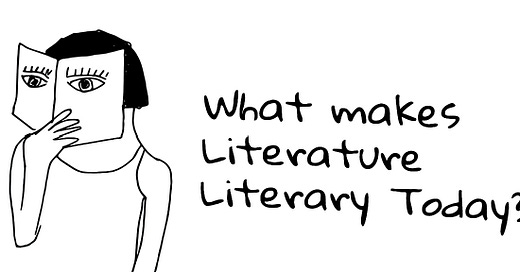What Makes Literature Literary Today?
A Critical Reflection on Ram c/o Anandi and the Politics of Literary Recognition
In literary discourse, the concept of literariness has always been contentious and evolving. Traditionally rooted in the aesthetic, structural, and linguistic aspects of a text, literariness once referred to the quality that distinguished literary works from utilitarian writing. Yet, in the contemporary landscape - where genre fluidity, reader accessibility, and popular forms increasingly shape literary merit - the definition of what constitutes the literary appears to be undergoing a profound transformation. The recent awarding of the Kendra Sahitya Akademi Yuva Puraskar to Akhil P. Dharmajan’s Ram c/o Anandi, a work best described as pulp fiction, brings this transformation to the fore.
At first glance, the award signals an encouraging shift: an openness to storytelling outside the conventional frameworks of high literature, an embrace of language that is direct, and a recognition of the reading public’s changing tastes. However, this shift also invites necessary scrutiny: is the celebration of popular forms leading to the erosion of critical standards that define the literary? Or more specifically, how does a work like Ram c/o Anandi, with its limited narrative complexity and superficial characterisation, satisfy the deeper criteria of literary merit?
Beyond Pedantic Language: Rethinking Literariness
It is a fallacy to equate literariness with linguistic pedantry or ornamental prose. The most profound literature often emerges in deceptively simple language - consider the works of Kamala Das, Vaikom Muhammad Basheer, or even Ernest Hemingway. What marks their writing as literary is not linguistic difficulty but depth of insight, emotional resonance, layered narration, and the ability to reframe reality. Their works carry a density of meaning that rewards rereading and critical interpretation.
In contrast, Ram c/o Anandi thrives on readability, punchy dialogues, and episodic thrill - hallmarks of pulp fiction. It is certainly consumable and entertaining, but does it invite layered readings? Does it provoke intellectual or affective disturbance? Does it disturb language, form, or thought in a way that expands the horizon of literature? These are not elitist questions - they are foundational to evaluating the literary worth of a text.
The Crisis of Depth
A closer analysis of Ram c/o Anandi reveals a conspicuous absence of narrative depth. The plot moves rapidly with little regard for nuance, often relying on stereotype and sensationalism to drive its events. The characters are largely two-dimensional, rarely undergoing internal transformation or moral conflict. There is little that holds the reader back for reflection - only the push of plot and action. While this works well for genre fiction, it limits the work’s literary substance. Without psychological intricacy, ethical tension, or symbolic layering, the text remains flat despite its performative energy.
This is not to say that pulp cannot be profound. The history of literature is rich with works that transcend genre boundaries - Chandler’s detective fiction, Le Guin’s speculative novels, or Mantel’s historical epics. These texts interrogate society, rework literary conventions, and engage language with rigour. Ram c/o Anandi, by contrast, seems content in its performative lightness, rarely venturing into the darker or more ambiguous territories of the human condition.
Literary Recognition and Institutional Politics
That such a work is celebrated with a national literary award points toward another reality - the shifting politics of literary institutions. The Sahitya Akademi, once seen as a barometer of literary excellence, now often appears to be mirroring popular sentiment and market dynamics. The rise of social media visibility, readership metrics, and performative virality might be playing a larger role in recognition than previously acknowledged. In such a scenario, literariness risks becoming synonymous with readability or relatability - qualities that, while valuable, are not sufficient to uphold the literary.
The award to Dharmajan should also be read within the context of regional literary cultures that are themselves grappling with the pressures of mass appeal, digital consumption, and linguistic dilution. Malayalam literature has a long legacy of radical thought, experimental form, and political engagement. Against this backdrop, Ram c/o Anandi feels like an aesthetic retreat - a move toward the consumable and away from the contemplative.
Towards a More Responsible Reading Culture
To critique the awarding of Ram c/o Anandi is not to dismiss the work or its readership. It is to demand a more accountable system of recognition - one that distinguishes between literary achievement and market visibility, between momentary excitement and enduring value. A truly democratic literary space does not dilute standards; it expands them through inclusivity, experimentation, and depth.
Literariness today must be redefined not just by linguistic flourish or intellectual elitism, but by how a text engages with its world - how it unsettles, reimagines, or deepens our perception of reality. That engagement, sadly, is missing in Dharmajan’s text. What remains is a fast-paced, surface-level narrative that may entertain, but does not transform.
And perhaps that is the essential question we must now ask: Should the literary be merely consumable, or should it remain transformative?





